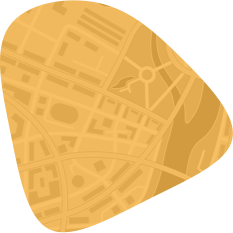
The anterior cruciate ligament (ACL) is a critical component of the knee joint, and when it sustains an injury, it can lead to a challenging path to recovery. According to the National Institute of Health, the ACL is the most commonly injured ligament in the knee. These injuries can occur suddenly, often during athletic activities, but they can also result from other incidents like car accidents and falls.
Individuals who experience an ACL injury often require surgery to repair the damage. Although a lengthy process, rehabilitation is a crucial aspect of the recovery journey. Any knee injury is bound to affect mobility, which can be frustrating as it may hinder people from performing their daily activities. However, it's important to understand that proper healing takes time.
Understanding the ACL recovery period
Recovery from an ACL injury is a unique journey, influenced by the type of injury and the chosen treatment approach. ACL damage can occur in various ways, and these factors play a significant role in determining your recovery timeline. In most cases, post-surgery recovery may span 9 to 10 months, while individuals with minor partial tears may experience improvement in as little as 3 months.
Here's an outline of the recovery path:
Immediate Post-Injury Phase (0-2 weeks)
You'll likely encounter pain, swelling, and restricted mobility in the initial days following an ACL injury. Employing the RICE method—Rest, Ice, Compression, and Elevation—is crucial to facilitate healing, alleviate pain, and reduce swelling. During this early stage, additional support and stability might be required, possibly in the form of crutches or a knee brace.
Post-Surgery Phase (1-3 weeks)
Following ACL surgery, the primary focus remains on pain management and controlling swelling. Gradually, you'll initiate gentle range-of-motion exercises guided by a physical therapist to ensure a smooth recovery.
Early Rehabilitation Phase (2-6 weeks):
During this period, physical therapy becomes more intense, concentrating on enhancing knee mobility, further diminishing swelling, and gradually rebuilding strength. Crutches can be used to help promote normal mobility and the ability to walk.
Strengthening Phase (6-12 weeks)
In the strengthening phase, exercises during physical therapy intensify to help build muscle around the knee joint. Activities like stationary biking and swimming might be introduced to aid in this process. The goal during this phase is to regain normal knee function and improve overall knee stability.
Late Rehabilitation Phase (3-6 months)
By this stage, you should be able to engage in light jogging, agility drills, and functional activities. You will continue to focus on building strength and endurance to promote overall healing.
Return to Full Activity (6-10 months)
During this period, you can gradually reintroduce more exercises and activities, all while carefully monitoring your knee. A full recovery can take up to a year, but most people return to their normal lives after 9 months. This timeline can vary among individuals, and athletes often take extra precautions before returning to their sport. Maintaining strength and flexibility remains crucial to prevent re-injury.
Talk to a New York doctor about your ACL recovery
ACL injuries can be daunting, but with the guidance of a skilled orthopedic surgeon, your path to recovery can be streamlined. Seeking advice from experienced surgeons like those at IMC Bone Doc is vital for a comprehensive recovery plan tailored to your specific ACL injury, be it a sprain or a complete tear.
If you're experiencing symptoms of an ACL injury, take the first step toward recovery and contact us today.






















